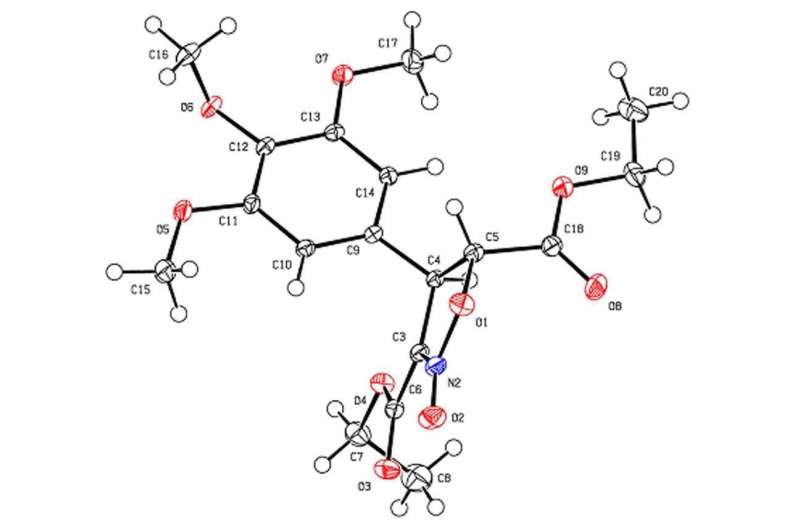Scientists are developing biologically active compounds for an anti-tumor drug

Researchers at RUDN University are actively involved in the development of isoxazoles, chemical compounds capable of suppressing the growth of malignant tumors. The results of the study were published in Tetrahedron.
The biological activity spectrum of isoxazoles is quite wide. They exhibit antiviral, anti-inflammatory and antitumor activity. Compounds containing the isoxazole ring are effective in treating cancer. In particular, one of them is known to slow down the growth of cancer cells and polymerize the tubulin protein, thus contributing to the decline of the inflammatory process. Another one reduces the activity of the protein Hsp90 (one of the heat shock proteins), which helps proteins in cancer cells to fold properly and protects them from heat shock.
However, the development of isoxazole derivatives is extremely complex: the necessary catalysts and reagents are not available on an industrial scale, and the synthesis of this class of substances is ineffective and poorly regulated. Therefore, the goal of the authors was to create an efficient and inexpensive method of regioselective synthesis of isoxazoles from available materials under mild conditions that do not require high temperatures and other factors that may complicate the synthesis.
During the research, the scientists synthesized 3,4-diaryl-5-carboxy-4,5-dihydroisoxazole-2-oxides. These compounds include a central five-membered heterocycle containing heteroatoms of nitrogen and oxygen that occupy neighboring positions. There are also substituents at carbon atoms, various functional groups whose position concerning heteroatoms can be changed.
"The article develops biologically active compounds that exhibit antitumor activity. Employees of RUDN University had been studying the structure, geometry and interrelation between structure and properties. We found that with different arrangement of substituents in the cycle, the properties of the compound also change," says Victor Khrustalev, DSc in Physical Chemistry, Chair of Inorganic Chemistry Department of RUDN University.
"The compounds possess a potential anti-cancer and antiviral activity, which must be carefully studied. In order to understand whether the compound is effective, it is necessary to carry out biological testing on living organisms. However, at first, we should undertake a detailed study of how the manifested properties of the resulting compounds depend on the position of the substituents in the isoxazole cycle, that is, how the biological properties of the substance being developed depend on its structure," the scientist concludes.
More information: Natalia B. Chernysheva et al, Synthesis of 3,4-diaryl-5-carboxy-4,5-dihydroisoxazole 2-oxides as valuable synthons for anticancer molecules, Tetrahedron (2017). DOI: 10.1016/j.tet.2017.10.016
Provided by RUDN University




















